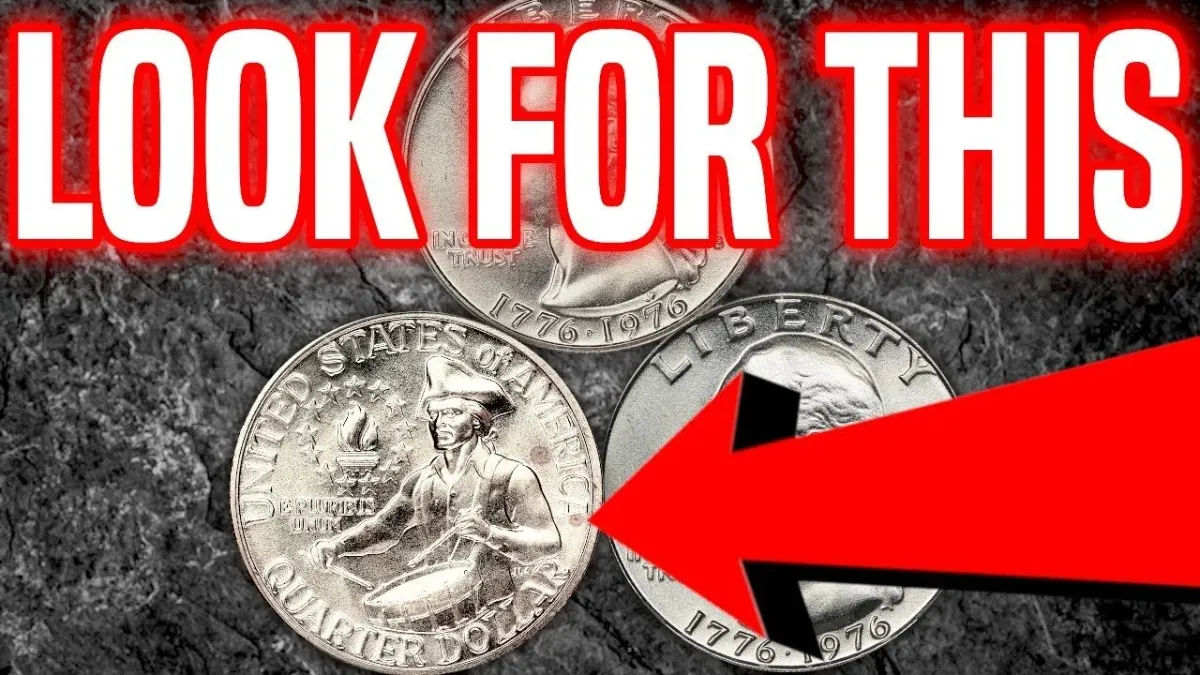The Rare Bicentennial Quarter Valued at $1 Million
Let’s face it—most of us rarely pay attention to the quarters jingling in our pockets. But what if one of those coins could be worth thousands—or even a million dollars? It sounds unbelievable, right? Yet, there is one particular coin sparking excitement among collectors: the 1976 Bicentennial Quarter.
Created to honor America’s 200th anniversary, this special quarter is more than just a symbol of patriotism—it could also be your chance at a remarkable financial surprise.
A Quarter Like No Other
In 1976, the U.S. Mint released a set of commemorative coins to celebrate the nation’s bicentennial, and the quarter was among the most distinctive. It still displayed George Washington’s famous profile on the front, but with a unique addition: instead of a single year, it showed “1776–1976,” marking 200 years of American independence. Turning the coin over reveals a design unlike any ordinary quarter—a colonial drummer standing confidently, holding a torch and surrounded by 13 stars, each representing one of the original colonies.
This iconic image has become a classic piece of Americana. These coins were produced at three different mints: Philadelphia (no mint mark), Denver (D mint mark), and San Francisco (S mint mark, which includes special silver and proof editions). Interestingly, the design was chosen through a nationwide contest and was created by artist Jack L. Ahr, giving everyday citizens a unique opportunity to influence the nation’s coinage.
Why Some Bicentennial Quarters Are Worth Big Bucks
Here’s where it gets really interesting—not all Bicentennial Quarters hold the same value. While most are still only worth their face value of 25 cents, certain rare varieties have sold for astonishing sums, with one reported to have fetched as much as $1 million. So what makes a quarter valuable? One key factor is minting errors, such as double strikes, off-center images, or printing mistakes.
These “errors” can transform an ordinary coin into a sought-after collector’s item. Another factor is the condition—uncirculated quarters that look fresh from the mint and have been carefully preserved can fetch hundreds of dollars. There are also silver versions minted in San Francisco, made with 40% silver, which are highly prized by collectors. You won’t find these silver quarters in everyday change but rather in special coin sets.
What’s a Bicentennial Quarter Worth Today?
Wondering how much your Bicentennial Quarter could be worth? Here’s a quick overview: most circulated quarters are valued between 25 and 50 cents—not bad but nothing extraordinary. Uncirculated coins, depending on their condition, can sell for $100 or more.
Silver quarters typically command prices ranging from $10 to $50. Minting errors can push the value much higher, sometimes reaching thousands of dollars. At the very top end, an extremely rare Bicentennial Quarter with a major minting error has reportedly sold for $1 million, making it one of the most valuable quarters known.
Are They Still in Circulation?
Yes, Bicentennial Quarters are still out there. Although the U.S. Mint stopped producing them decades ago, you can still find these quarters in your pocket change, old coin jars, or forgotten piggy banks. The possibility remains that one might turn up in your everyday change, waiting to be discovered.
How to Spot a Valuable One
If you want to try your luck, here are some tips to help you identify valuable Bicentennial Quarters. First, check the edges—silver versions have a solid silver edge, while regular quarters show a copper stripe. Look for the S mint mark from San Francisco, which indicates it could be part of a silver or proof set.
Use a magnifying glass to search for errors like doubled text or misaligned designs. You can also weigh the coin: a standard quarter weighs 5.67 grams, while silver versions weigh about 5.75 grams. Lastly, if you find a promising coin, be sure to store it safely in a protective case to maintain its value.
Final Thoughts: Treasure in Your Pocket?
The Bicentennial Quarter is more than just a piece of currency—it represents an important chapter in American history. Although most are worth only their face value, some rare examples can bring in hundreds, thousands, or even reach the million-dollar mark.
So next time you dig through your change, take a close look at any 1976 quarters you find. You might be holding a hidden treasure without even knowing it. Even if you don’t find a million-dollar coin, exploring the world of rare coins can be a fun and potentially rewarding hobby. Happy coin hunting!
FAQs
Q1: How can I tell if my Bicentennial Quarter is valuable?
Look for mint marks like the “S” from San Francisco, check for minting errors such as double strikes or off-center designs, and assess the coin’s condition—uncirculated coins are typically more valuable.
Q2: Are all Bicentennial Quarters made with silver?
No, only the special editions minted in San Francisco contain 40% silver. Most Bicentennial Quarters in circulation are made of standard copper-nickel.
Q3: Where can I find Bicentennial Quarters today?
You can still find them in your pocket change, old coin collections, piggy banks, or coin jars since they remain in circulation despite being minted decades ago.
Q4: What is the highest price a Bicentennial Quarter has sold for?
The rarest Bicentennial Quarters with major minting errors have reportedly sold for as much as $1 million.
Robby is a passionate numismatist and coin enthusiast with a deep appreciation for rare and historical coins. With years of experience in coin collecting and research, he shares valuable insights, tips, and fascinating stories from the world of numismatics. Whether you're a seasoned collector or just starting out, Robby's expertise helps bring the rich history of rare coins to life.
